November 25 - December 1, 2012: Issue 86
MV Elvina (Falcon)
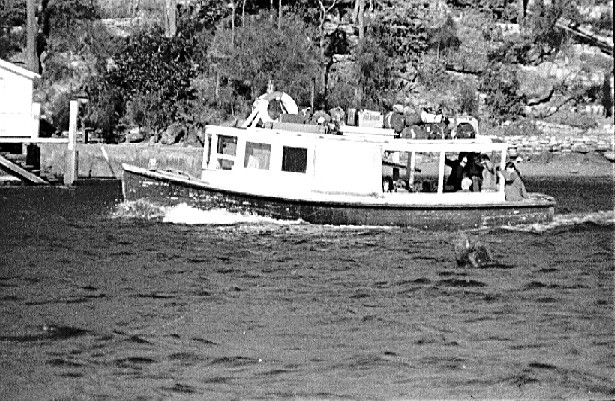 The Elvina, built by William Joseph Goddard at Palm Beach, is considered by many the original Pittwater ferry. Launched as the Falcon in 1928, although some sources state she was on the water by 1911, this vessel was built as a motor launch for an A Sutton of Brooklyn. The dual dates for her launch may be attributed to W J Goddard’s father, William Reuben Goddard (1847-1916), also being a boatbuilder of smaller vessels;
The Elvina, built by William Joseph Goddard at Palm Beach, is considered by many the original Pittwater ferry. Launched as the Falcon in 1928, although some sources state she was on the water by 1911, this vessel was built as a motor launch for an A Sutton of Brooklyn. The dual dates for her launch may be attributed to W J Goddard’s father, William Reuben Goddard (1847-1916), also being a boatbuilder of smaller vessels;
LATE MR. W. E. GODDARD.
The funeral took place yesterday at Gore Hill Cemetry of the late Mr William Reuben Goddard who died at his residence,8 West-Street, North Sydney, on Saturday last. The late Mr Goddard was an old resident of North Sydney, where he carried on the business of boatbuilder, his workshop and yards being situated at Berry’s Bay. Mr Goddard launched many small craft from his yard in the early days, devoting most of his time to building small boats and skiffs. He was noted for his skiff building. He was 68 years of age. He left a family of four sons and two daughters. LATE MR. W. R. GODDARD. (1916, February 15). The Sydney Morning Herald (NSW : 1842 - 1954), p. 10. Retrieved from http://nla.gov.au/nla.news-article15646800
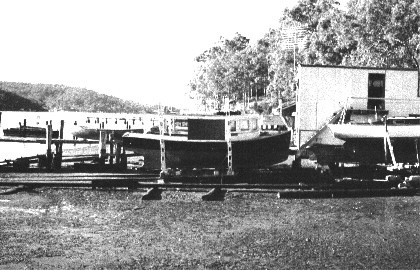 Mr W J Goddard purchased land at Palm Beach near the southern end of the golf links in 1917 and commenced building vessels there from at least 1919. The Elvina, 6 tons, 25 feet long (7.6m) by 10 feet with a passenger capacity of 30 may have been a Storeboat on the Hawkesbury, a means for people to receive everything they needed in water access only places and one of numerous vessels that did so then, a small passenger ferry or used simply as a private vessel. There was an Albert Sutton, fisherman, a resident of Brooklyn resident from at least 1905. The amount of fish that ran in this river and at its mouth as well as into Pittwater at this time as the mullet season, among other fish seasons is legendary and fed a young hungry colony. This gentleman may well have been able to afford a new vessel as by 1916 he seems to be a trustee of the recreation ground at Brooklyn among other civic duties.
Mr W J Goddard purchased land at Palm Beach near the southern end of the golf links in 1917 and commenced building vessels there from at least 1919. The Elvina, 6 tons, 25 feet long (7.6m) by 10 feet with a passenger capacity of 30 may have been a Storeboat on the Hawkesbury, a means for people to receive everything they needed in water access only places and one of numerous vessels that did so then, a small passenger ferry or used simply as a private vessel. There was an Albert Sutton, fisherman, a resident of Brooklyn resident from at least 1905. The amount of fish that ran in this river and at its mouth as well as into Pittwater at this time as the mullet season, among other fish seasons is legendary and fed a young hungry colony. This gentleman may well have been able to afford a new vessel as by 1916 he seems to be a trustee of the recreation ground at Brooklyn among other civic duties.
Albert Sutton, a fisherman, residing at Brooklyn, deposed that on the 3rd instant he went home about a quarter past 5 o'clock, and missed his towel from a rack on the back verandah. He gave information to the police, and between 12 and 1 o clock that night he was .shown a ratchet brace and canvas water-bag at the police station, which he identified as his property. A BROOKLYN CASE. (1905, April 8). The Cumberland Argus and Fruitgrowers Advocate (Parramatta, NSW : 1888 - 1950), p. 10. Retrieved from http://nla.gov.au/nla.news-article86179107
From their base at Brooklyn boats of various types and sizes leave throughout the day for many destinations, some upstream, some down, a few to the opposite shores, and others with articles of trade on a weekly cruise of the numerous waterways which are flung out like giant antennae. The housewife, denied access to the city perhaps for weeks at a time, looks forward to the arrival of the shopping boats, and takes the opportunity to replenish supplies of groceries, fresh meat, flour, and vegetables, and, if not the possessor of a wireless set, to hear the news from "outside." The trade to these isolated dwellings is fairly extensive, and the boats contain a varied assortment of wares. SHOPPING BOATS. (1936, March 14). The Sydney Morning Herald (NSW : 1842 - 1954), p. 13. Retrieved November 22, 2012, fromhttp://nla.gov.au/nla.news-article17341476
She was sold back to Mr Goddard in 1942, perhaps to add capital value to his own assets briefly as he then sold his business to the Port Jackson & Manly Steamship Company the same year, including the Falcon, his ferry business (to Western shores of Pittwater) and a general store that had liquor licence. This company had begun purchasing land at Newport during 1933 in anticipation of a ferry boom or simply realizing how many thousands travelled to and stayed in Pittwater. The Falcon was then one of four PJMSC ferries operated in Pittwater and her surrounds by 1946, the other two being the Currawong and Swanhilda.
ATTENTION Is invited to Notice in Government Gazette of 7th December 1934, calling for objections to application by the Port Jackson and Manly Steamship Co., Ltd., to reclaim and purchase about 32 perches of Crown land below the high-water mark of Pittwater, fronting Lots 3,4, and 5. of Section E. of the private township of Newport. Objections, accompanied by a deposit of £10. and lodged with the Metropolitan District Surveyor on or before the 4th January, 1935, will receive consideration. G. F. ALLMAN, Under secretary for Lands. Advertising. (1934, December 7). The Sydney Morning Herald(NSW : 1842 - 1954), p. 9. Retrieved from http://nla.gov.au/nla.news-article17142562
FERRY FOR BROKEN BAY; The Port, Jackson and. Manly Steam-ship Company announced yesterday that the Rover is expected to sail tomorrow from Circular Quay to begin a ferry-boat service at Broken Bay. The vessel will join the three other ferries operating in the Palm Beach, Hawkesbury River, and Pittwater-area. ; During the war the, Rover was, used as a patrol boat by the R.A.N. FERRY FOR BROKEN BAY. (1946, May 3). The Sydney Morning Herald (NSW : 1842 - 1954), p. 10. Retrieved from http://nla.gov.au/nla.news-article17992931
During World War II, like all vessels in Pittwater, she was put to war work moving troops to the gun emplacements on West Head as well as people around Pittwater. When peace resumed she was returned to the PJMSC and continued her Pittwater runs. By 1950 this company was experiencing financial difficulties and the Falcon, along with the Swanhilda and Currawong, were sold to sold to E.H. Caldwell of Church Point in December 1951 who renamed her ‘Elvina’ after beautiful Elvina Bay. This man appeared to have financial difficulties too as the company took back their fleet in 1952.
Some sources state the Church Point Ferry service began in 1924 others favour 1940. As the first ever school ferry in NSW commenced from this wharf in 1900 in the form of the launch Patonga, there was definitely a ferry service at Church Point at then. One of the first 1924 drivers was a demobbed Norwegian seaman, Einar Holst Fredriksen, AKA Fred. Sylvia and Keith Egan of Scotland Island were operating the Church Point Ferry Service by 1960 and a 1961 Women's Weekly article on board the Cowan shows some of the duties this entailed. By 1966 an ML Russell is listed as the owner of the Church Point Ferry Service in Warringah Council records. This man had offered to act as agent and supervisor of the wharf and been recommended to fulfil this capacity by the Shire’s Clerk. By 1969 popular local lad, Laurie Duff, at the tender age of 18 bought the Church Point Ferry Service. The service was running the Curlew, the Wagstaff, and the Elvina in 1967 when Mr Duff began.
The Elvina, Scotland Island Ferry, 1971
Prior to 1984 she was slipped and her wheelhouse extended, the passenger cabin-saloon were also modified. In 1985 a Perkins 40 bph engine was installed.
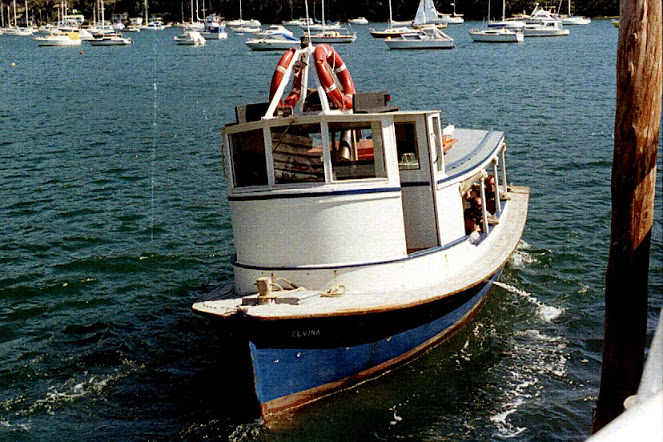
The Elvina at Church Point, 1984
This wonderful vessel, with at least 75 years recognizable service in Pittwater, must be the longest continual passenger ferry run in NSW. She is still part of the Church Point Ferry Service, now owned by Penny Gleen and Simon Wastell.
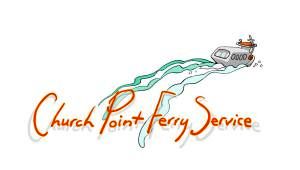 Elvina charters
Elvina charters
The Elvina became available from July 2012 for a more personal charter. Very safe for small kids, and perfect for a “pirate” birthday party. She has undergone extensive rebuild and is the original Pittwater Ferry.
The cost for the Elvina is $175 per hour for a minimum of 2 hours. The Elvina is licensed to carry 27 passengers. Contact Church Point Ferry Service for details.
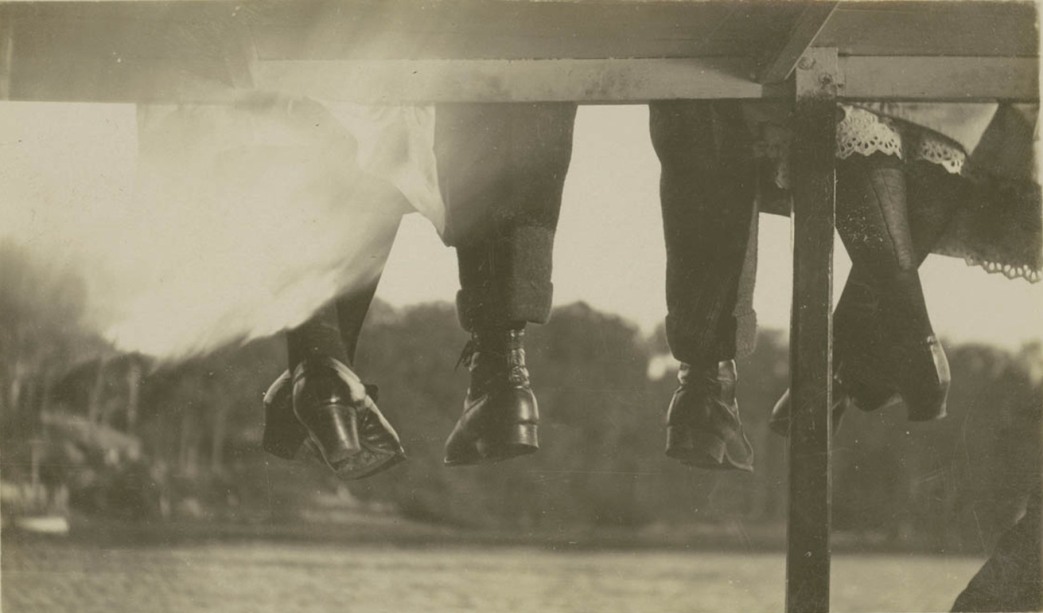
Legs of a man and two women dangling from the roof of a ferry [One man's and two women's legs as they sit on the roof of a ferry]. Hood, Sam, 1872-1953, from Album Hood Collection part II : [Postcards: Australian and overseas] Date of Work ca.1905-ca.1925. Image No. a342015. Courtesy State Library of NSW.
All photographs courtesy of ‘Pittwater Offshore Newsletter Images’ and Penny Gleen, Church Point Ferry Service. All Rights Reserved.
Elvina Bay Summer Welcoming
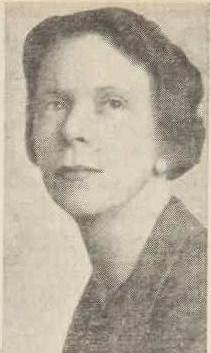 Alison McDougall was an actress, musician and writer. Although engaged in 1930 while in Canberra to an actor who formed part of the group she too was a member of, the Canberra Society of Arts and Literature, Alison McDougall does not appear to have married, the ‘roles’ for women during these decades being fairly black and white. An attendee of the Feminist Club in Sydney in 1925, her first story was published when she was nine years old. Her first book ‘Grit’ was published in serial form in The Bulletin. Further books were praised for ‘breaking new ground’ by some critics while others, usually male, claimed they were ‘sentimental’ and that she lacked ‘maturity or dispassionate insight’.
Alison McDougall was an actress, musician and writer. Although engaged in 1930 while in Canberra to an actor who formed part of the group she too was a member of, the Canberra Society of Arts and Literature, Alison McDougall does not appear to have married, the ‘roles’ for women during these decades being fairly black and white. An attendee of the Feminist Club in Sydney in 1925, her first story was published when she was nine years old. Her first book ‘Grit’ was published in serial form in The Bulletin. Further books were praised for ‘breaking new ground’ by some critics while others, usually male, claimed they were ‘sentimental’ and that she lacked ‘maturity or dispassionate insight’.
Nevertheless many of her works were best sellers in their time. During 1946 she worked as a script writer for the ABC on ‘The Q Story’ and travelled Australia seeking pioneers and their stories before they and their insights and experiences departed our landscapes.
In the summer of 1937-38 she stayed at Elvina Bay, Pittwater and wrote of her Summer experience here. As we farewell our first month of celebrating Pittwater Ferries in our History page with the Elvina/Falcon we also welcome Summer with a tribute from one of the bays that formed part of her run from one of those who was a Summer resident;
SUMMER SCENE On Pittwater.
The sombre hills brood over the water, unchanged since the beginning of things. Tall trees stand to watch their reflection tremble in the deep water, all the ground beneath them scattered with particles of lavender and greybark. Their newly discovered trunks are white as milk, or fawn, or rich rust-red, and smooth as flesh-smooth and cool.
In the little, undiscovered bays the shadowed water Ups gently against rocks, against a rim of pale sand. Beyond are gullies, rocky, cool, and damp, where water has made a course for itself down the hill-side. The trees in these gullies are big and gnarled, twined fantastically with long rope thick vines that strive to join them to each other, and great tree-ferns and palms strain upward to the light.
On the rocky escarpments that crown the hills grow Christmas bells, flannel flowers, Christmas bush. The bells flaunt their bright colours on a ledge covered with thick green moss, just below the sheer rock face. Some-where a hidden waterfall chuckles, and moisture drips continually down the rocks and over the moss and flowers. Like an accompaniment to the still heat that never ceasing buzz of the cicadas haunts the valleys and the hillsides.
The water is all a dazzle of bright sun and white sails and rowing-boats with the drops falling diamond bright from oar blades. Laughter, voices calling, flash of colours, tanned shoulders moving rhythmically, a little boat scudding before a puff of wind like a drunken butterfly.
Smoke is going up from picnicker's fires; the little waterside cottages are gay with coloured towels and bathing things.
Evening comes almost reluctantly, touching water and hills to a study in pastels. The water Is so still that it is possible to feather oars with a whisper of flat blades along the surface. On the narrow grey wooden wharves parties are fishing. The chorus of the cicadas is muted, but scents hang in the still air scents of gum and seaweed.
Night;-dark, cool, quietly moving. In its movement the quality of a symphony; branches stirring, clouds moving quietly in a wan sky, soft movement of the water against the shore, the air blowing cool on hot faces-bringing regret for the day gone, promise for the morrow.
ALISON MCDOUGALL.
SUMMER SCENE. (1938, January 8). The Sydney Morning Herald (NSW : 1842 - 1954), p. 13. Retrieved from http://nla.gov.au/nla.news-article17443345
Mrs. Younghusband's visit to Australia is her first out of New Zealand, but her own country she knows well, and she has sketched wherever she has been. She showed me three pencil and chalk sketches for pictures she made during last weekend at Elvina Bay, where she was staying with Miss Alison McDougall, the novelist. COLONY OF NEW ZEALAND WOMEN PAINTERS IN SYDNEY. (1937, December 2). The Sydney Morning Herald(NSW : 1842 - 1954), p. 26. Retrieved fromhttp://nla.gov.au/nla.news-article17436499
Photo of Alison McDougall from: Books. (1938, August 20). The Australian Women's Weekly(1933 - 1982), p. 34. Retrieved from http://nla.gov.au/nla.news-article52266186
Also Available: The First Scotland Island Cup, Trophy And Race And The Gentleman Who Loved Elvina Bay - from this page:
Dear Ms Guesdon,
My name is Kay Morrell and I am a granddaughter of Herbert Fitzpatrick. Your recent article on ‘The First Scotland Island Cup’ has given me great pleasure. It was only by coincidence that I came across your article as an article that I had previously ‘saved’ from your magazine on ‘Harry’ would not open so I went on to your website and clicked on history…I couldn’t believe my eyes when I read the headlines…how very fortunate was I and the rest of the Fitzpatrick family who I will be forwarding on your article.
I have only started doing a bit of research on Pittwater and Herbert’s sailing days over the last few years. Our son moved to the northern beaches on his return from a stint overseas (we lived in Griffith) and was in a unit on Pittwater Road. When he advised me of this I laughingly told him that ‘he had returned to his roots’ and, had I ever told him that Pop was christened 'Frank Richard Pittwater'? What a laugh. Daniel has settled in the area due to the fact of falling in love with a Northern Beaches girl that he met overseas and is now married to. He has his own landscaping business so is often in the Pittwater area and has become very interested in the Fitzpatrick history.
My husband and I visited them last year and for the first time, had a good look at the area and even took the ferry to Scotland Island. I was very much aware of it’s significance to the Fitzpatrick family due to remembering Dad telling us stories of their very happy times there…. what a gorgeous part of the world.
I can confirm for you that Herbert did name Elvina Bay. I have an article written by my aunt Elvina Holmes in August 1986 called ‘Surprise Surprise The story of Scotland Island’. She wrote this article at the request of Father Carol Grew a priest from the Diocese of Broken Bay for his parish magazine….she met Father Grew at a catechists mass and advised him of her links to the area.
In this article Elvina states that Herbert met Florence while she was visiting her sister Elvina Noonan in hospital the same time as Herbert, as Elvina Noonan was his neighbour and friend. Elvina Noonan died on 1st July 1922 and Herbert and Florence married in December 1923. They honeymooned on Scotland Island in a very small fibro cottage.
“It was at this time that all the streets on the Island were named after members of both families (with the exception of Thompson St and Robertson Road). As Herbert bought and developed more areas around Pittwater, Newport and Avalon, more streets and parks were named after members of the families. It is no wonder that he named Elvina Bay after the lady who had been responsible for him meeting his wife.”
I can also add that Geoff (youngest child of Herbert and Florence) also called his eldest child Elvina.
Sadly all four children of Herbert and Florence are deceased. Geoff died last year and my Dad died suddenly at the age of 69 years…it seems to me that the older you get you become so much more interested in your parent’s life so I can tell you that it was such a buzz reading about my grandparent’s wedding and other memorable occasions. I knew that they went to Narranderra to live as Dad had pointed out to us (my brother Shane and I) their house opposite the Murrumbidgee River but did not realise that they moved because of my grandfather’s bad health and it was only for 1 year. Dad had told us that during their time in Narranderra he was an altar boy there for the priest John Hartigan known as ‘John O’Brien’ the famous bush poet.
Dad inherited the Marshall Plate and I have fond memories of him getting the silvo out to give it a good polish….it was certainly held in high esteem and was proudly displayed in the loungeroom (which was off limits to us children). The Marshall Plate is a very large ornate silver tray. When Dad died the Plate was passed on to Shane. I will ask Shane to take a photo and send it to you.
I have a few newspaper clippings that belonged to Dad of Herbert’s races. One clipping states “The happiest man on the flagship was Vice-Commodore Harry Fitzpatrick, ‘Lord Mayor of Scotland Yard’ who won the John Roche Handicap.” It was obviously apparent way back then of his fondness for the area.
Next time I am in the area for a little bit of nostalgia, I hope to visit the RMYC and the RPAYC.
I wish you a most successful and enjoyable 2014 ‘Scotland Island Race’ and I commend and thank you sincerely on your effort and the time that you have put into this article.
Kind regards
Kay Morrell, Thursday 27th of February, 2014